Italy - 1985
Taking long service leave for the middle school term in 1985 I went on my first trip to Europe.
(A 13-week Melbourne - Bangkok - Hong Kong -Taipei - Japan - Trans Siberian Railway - UK - Athens -
Israel - Egypt - Western Europe - Singapore - Melbourne trip.)
From Vienna we travelled through the Austrian Alps, staying overnight at Villach in Austria
and then through The Dolomites into Italy to Cortina and eventually to Venice.
The Dolomites
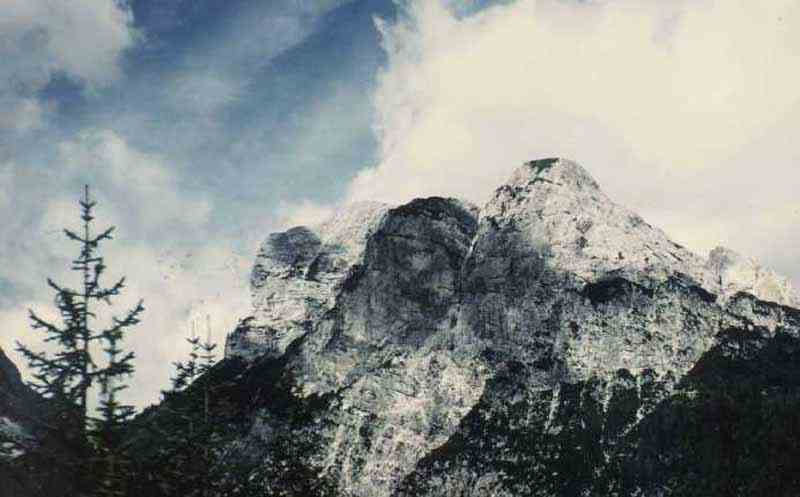
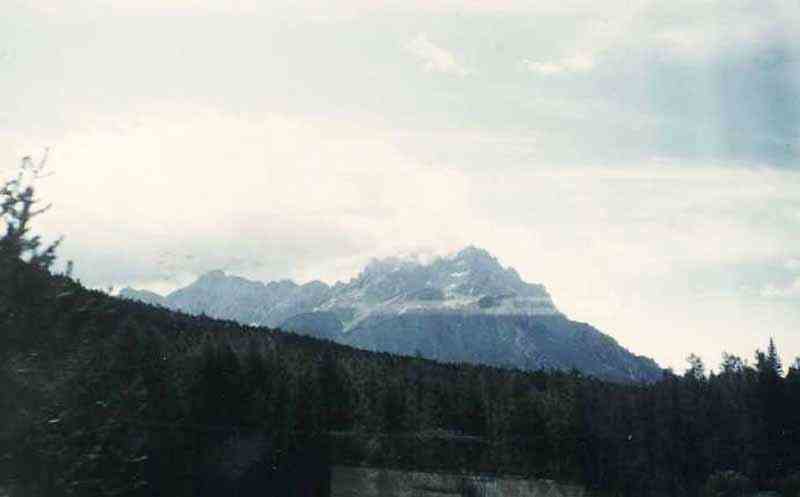
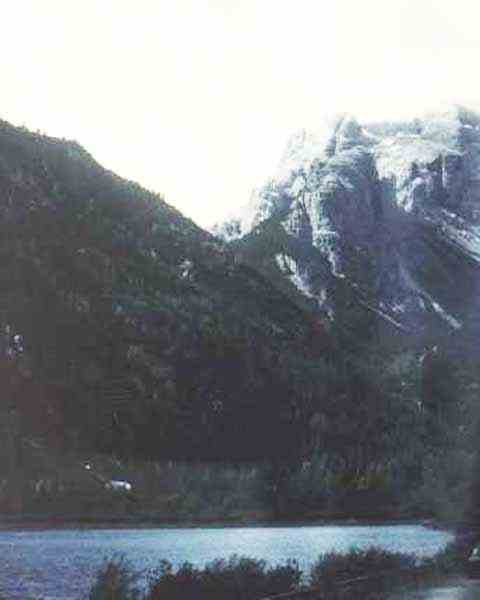
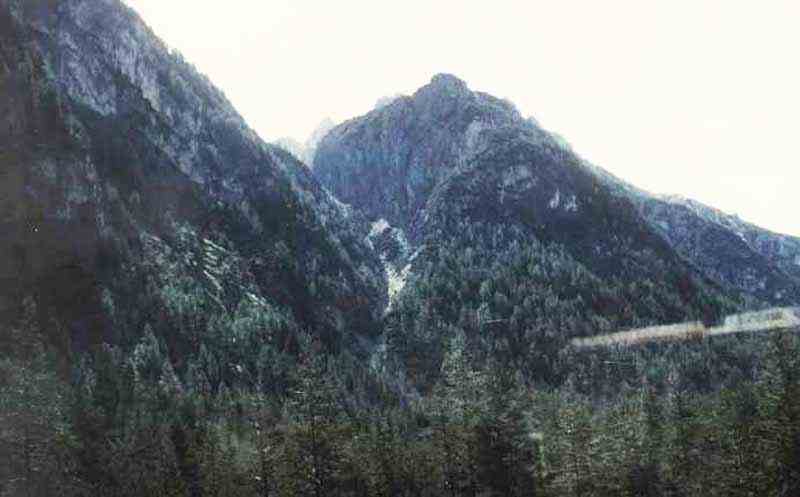
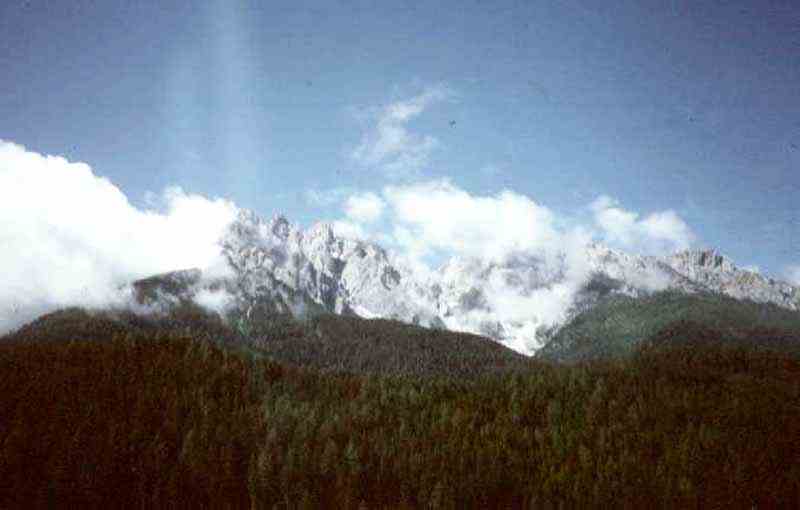
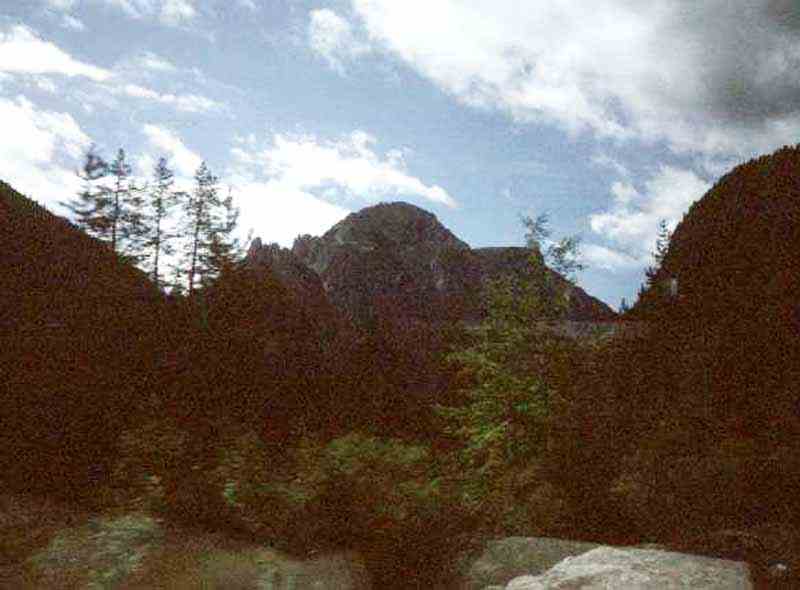
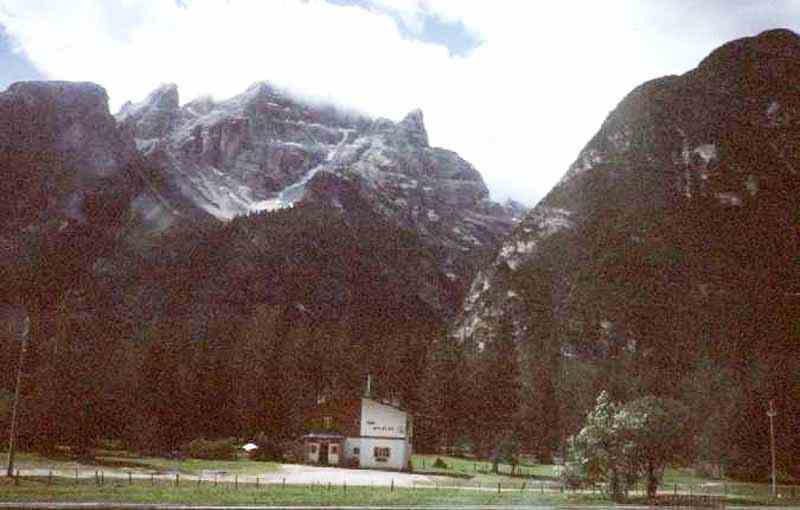
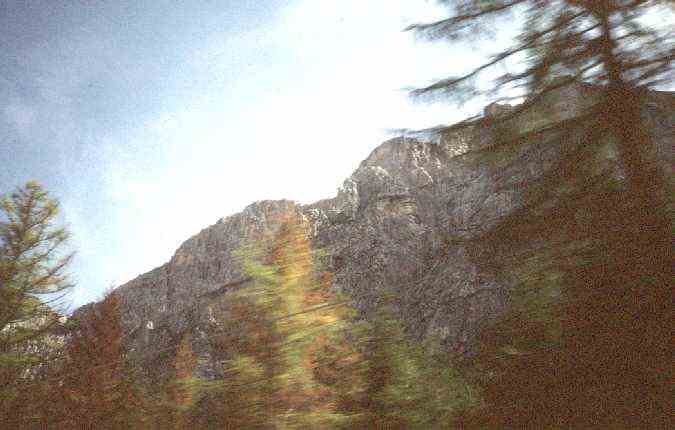
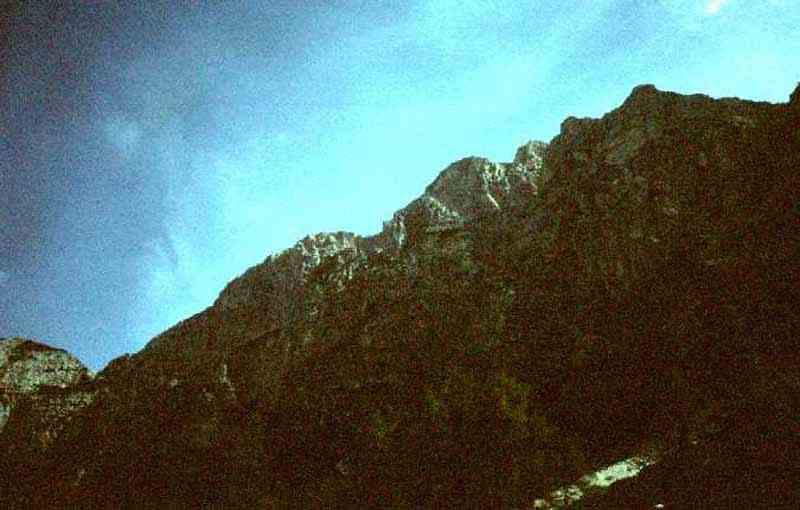
A Ski chalet at Cortina. The 1956 Winter Olympic Games were held in this Italian mountain village.
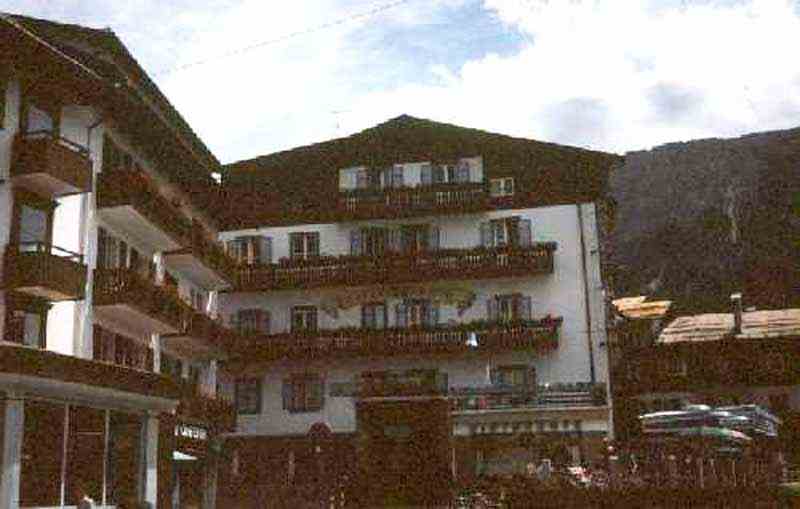
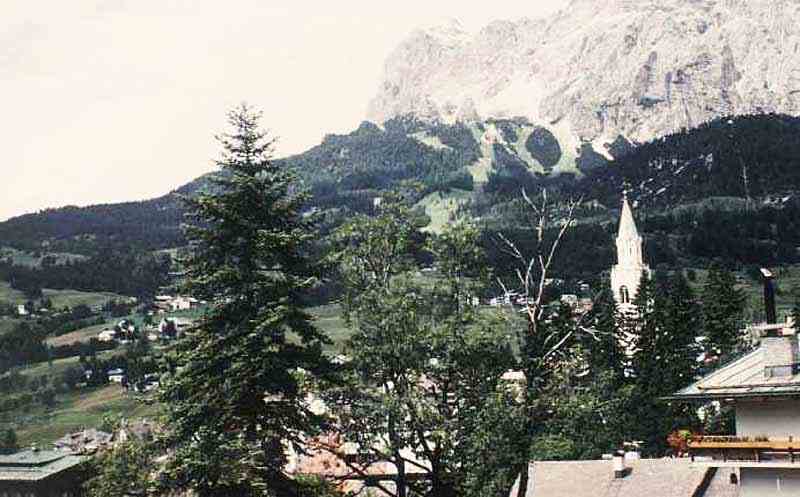
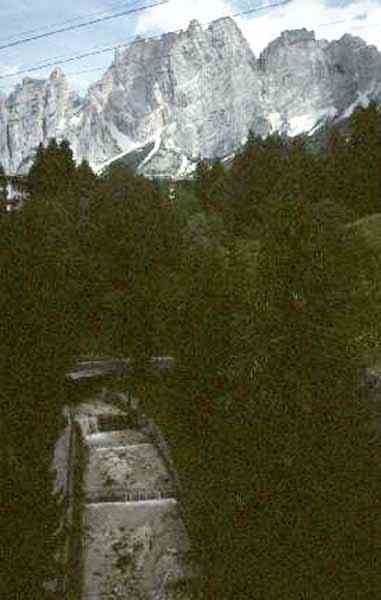
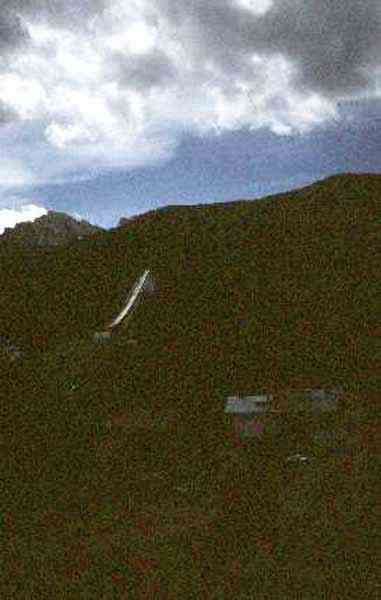
An Italian Autostrade.
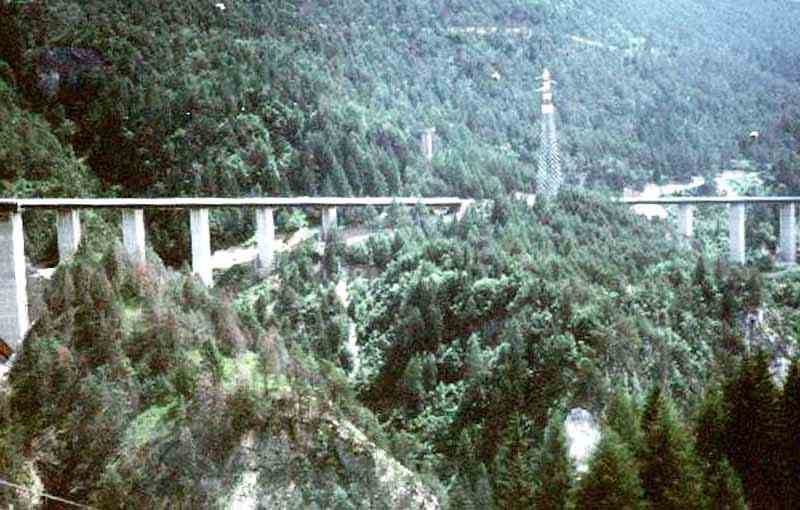
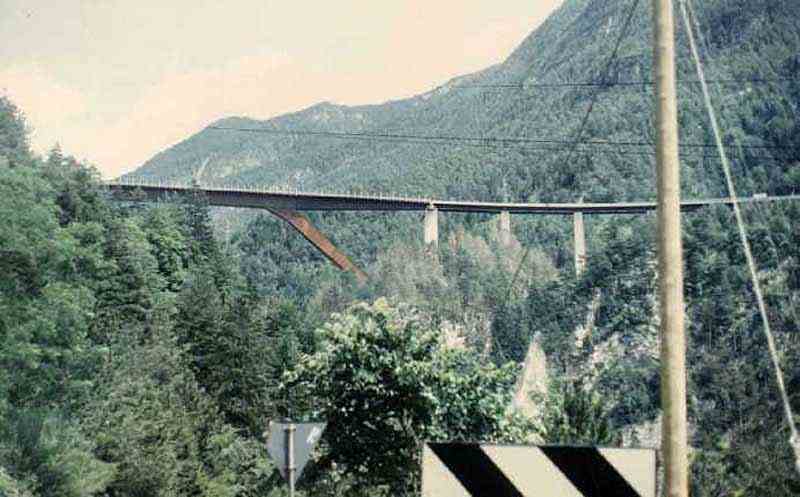
Venice
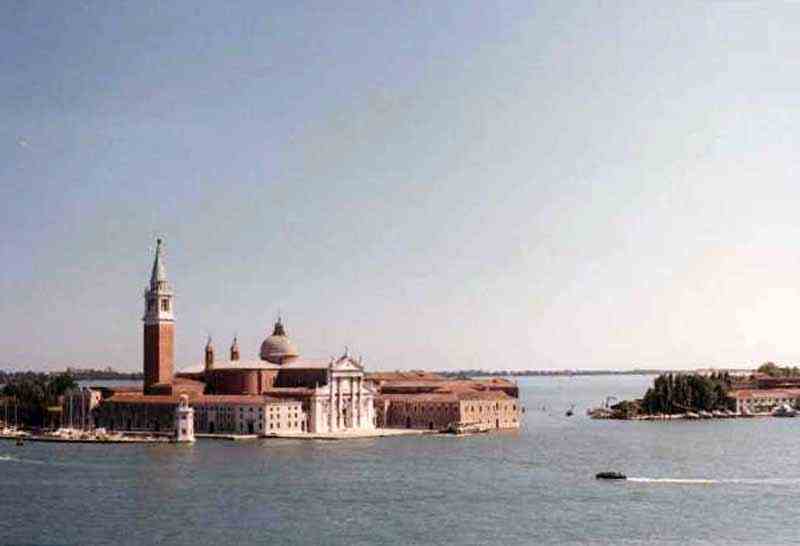
The Rialoto Bridge.
The bridge was the meeting place in Shakespeare's Merchant of Venice.
Marco Polo lived in this area.
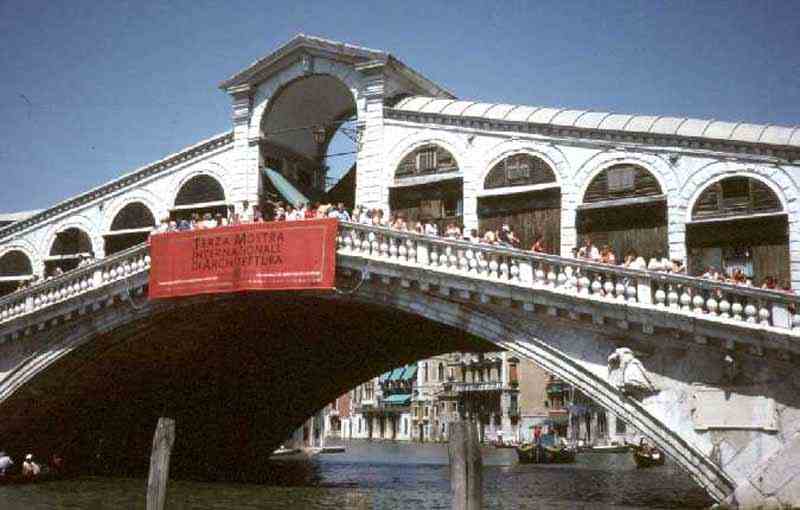
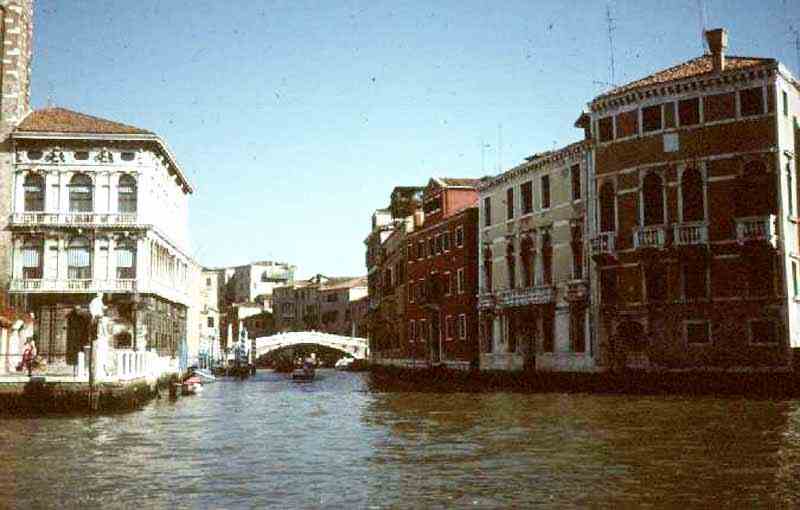
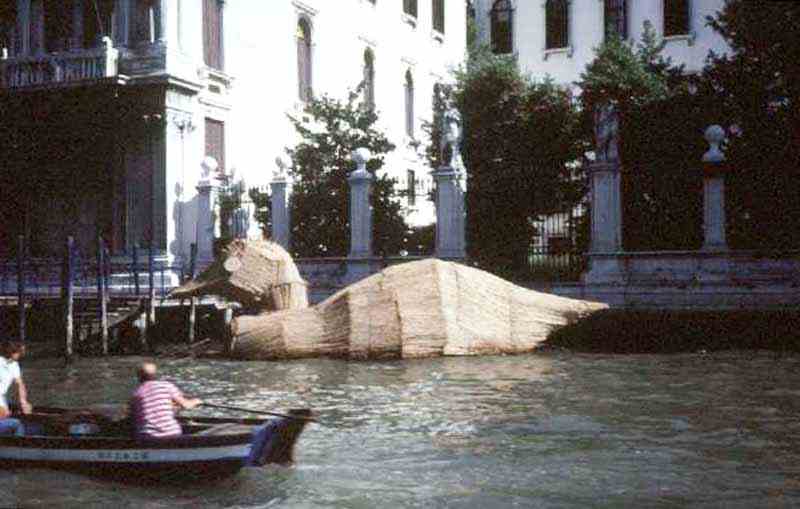
Venetian gondolas are black as a sign of respect for the people who died in the black plague.
Gondola means sea horse. They have bronze sea horses on them.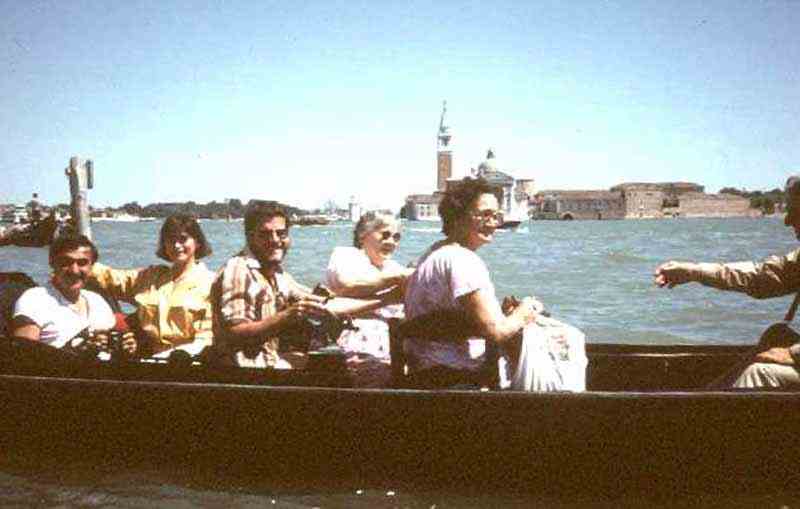
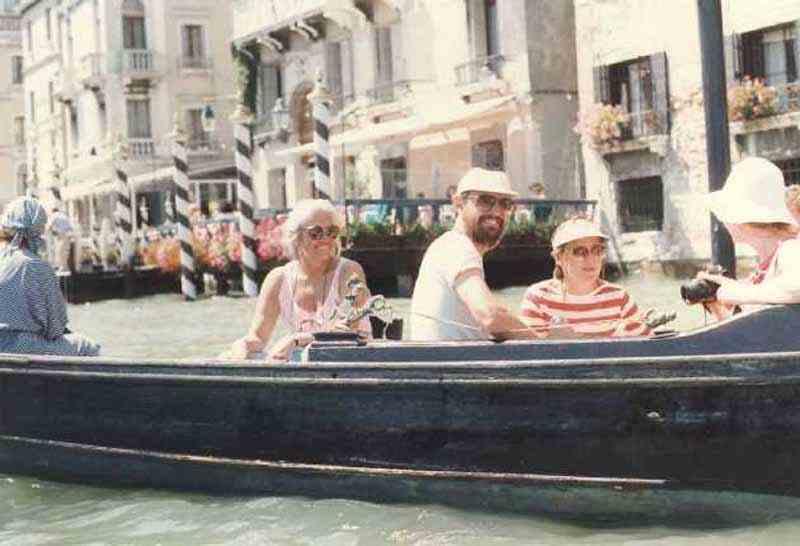
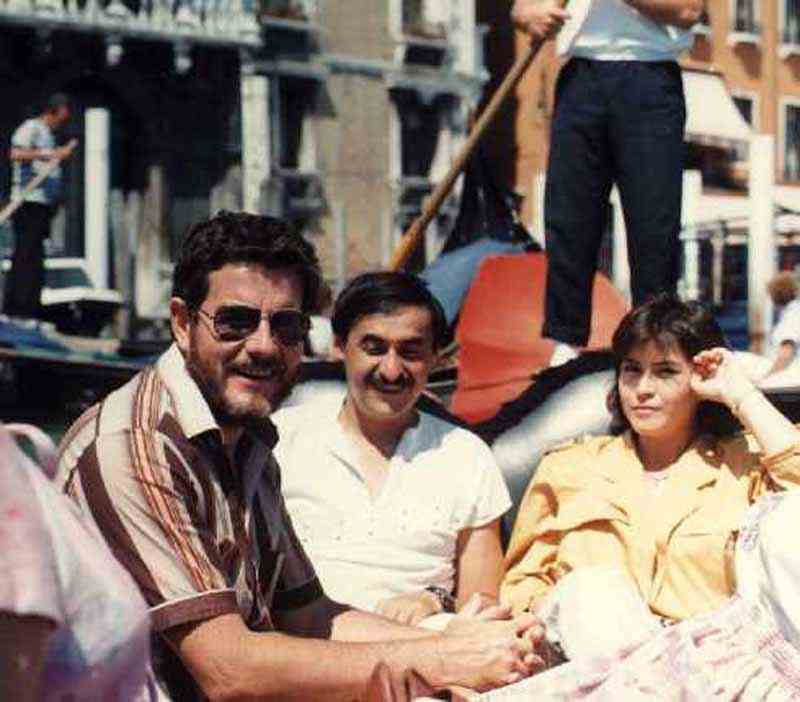
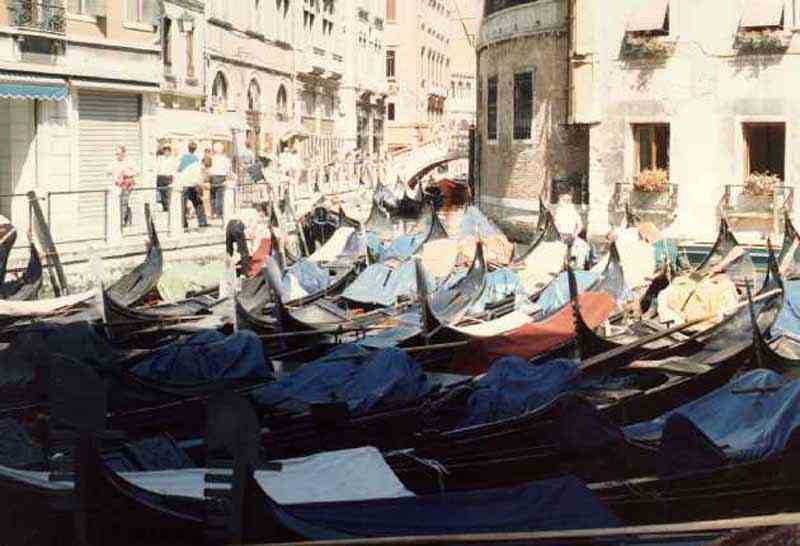
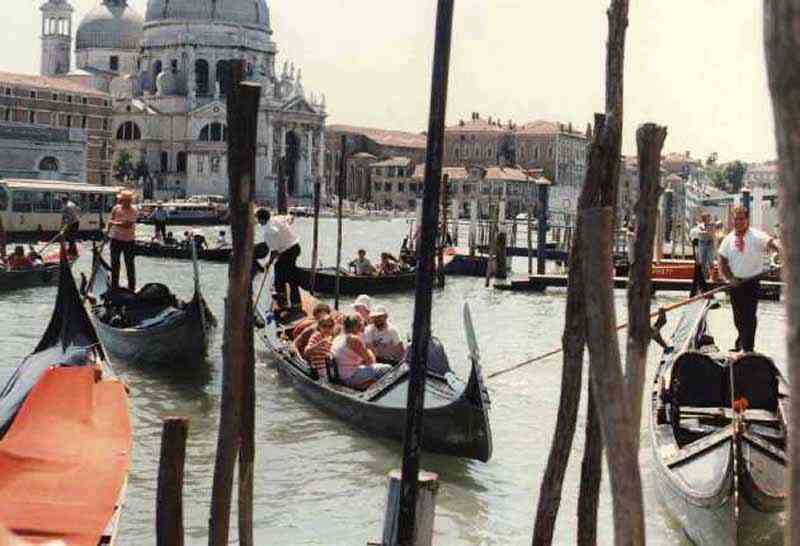
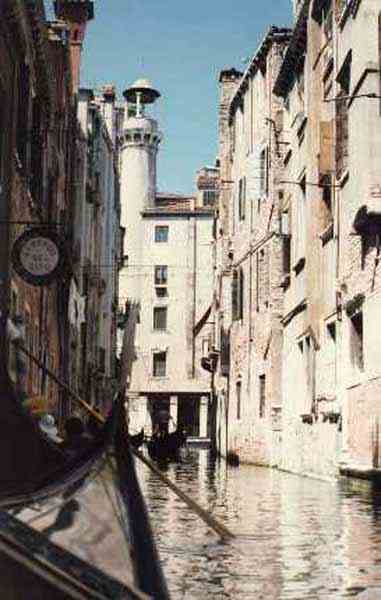
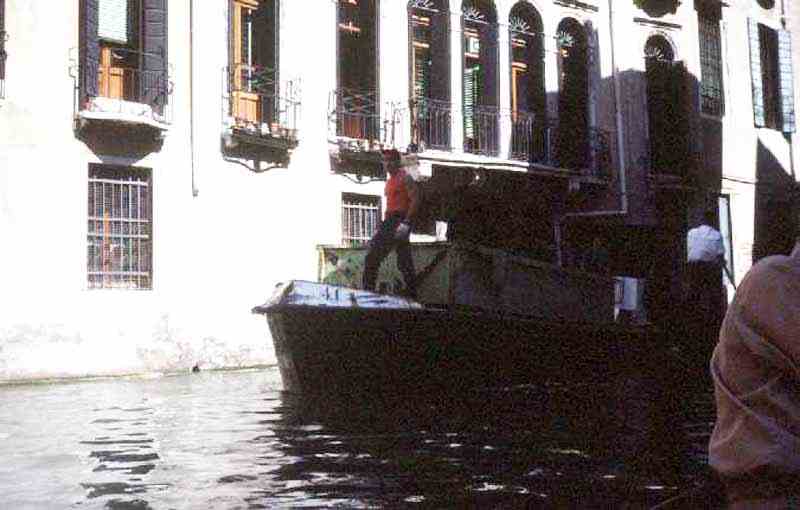

The Bridge of Sighs connects the Doge's Palace to the dungeons.
It is called the Bridge of Sighs because the prisoners sighed as they had their last look at Venice
while they passed on their way from sentence to imprisonment or death.
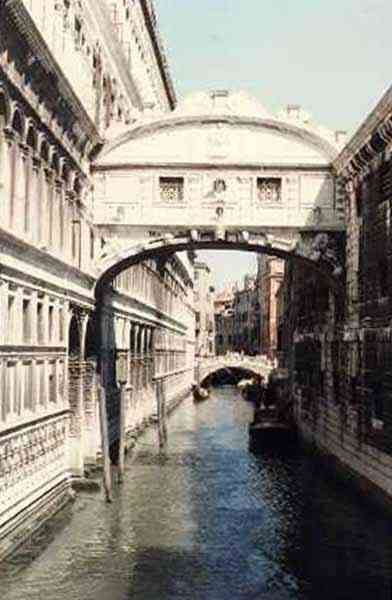
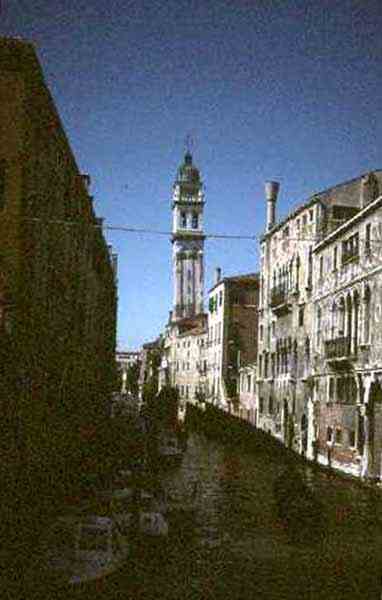
St Marks Square.
Our humorous guide said that they were Catholic pigeons - no birth control.
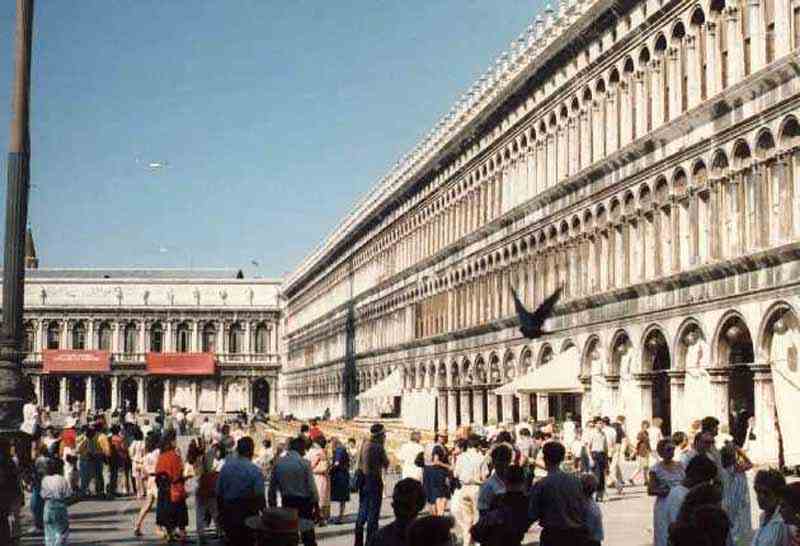
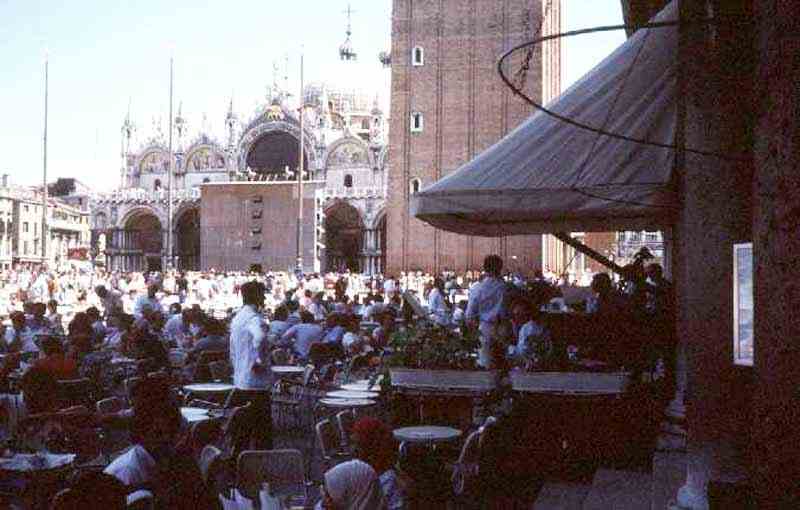
A chastity belt at the museum at the Doges Palace.
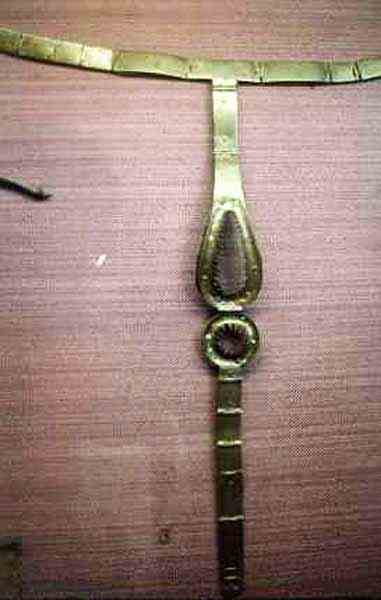
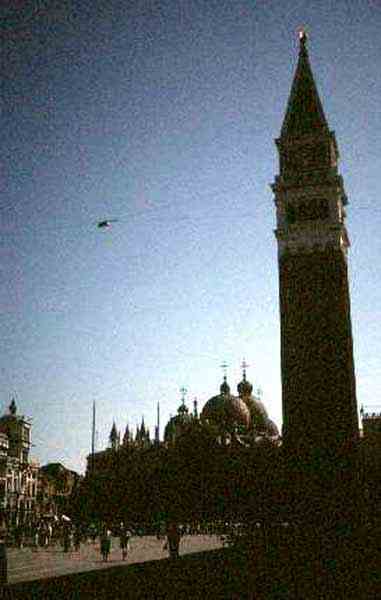
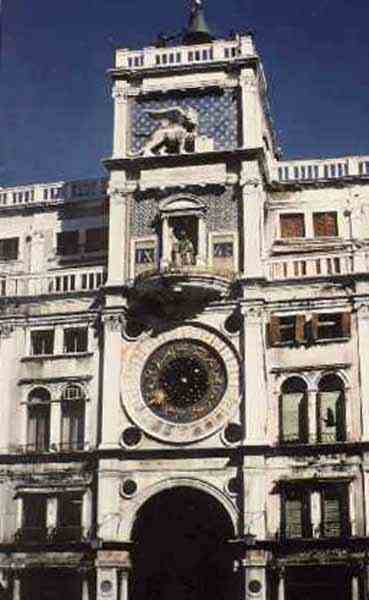
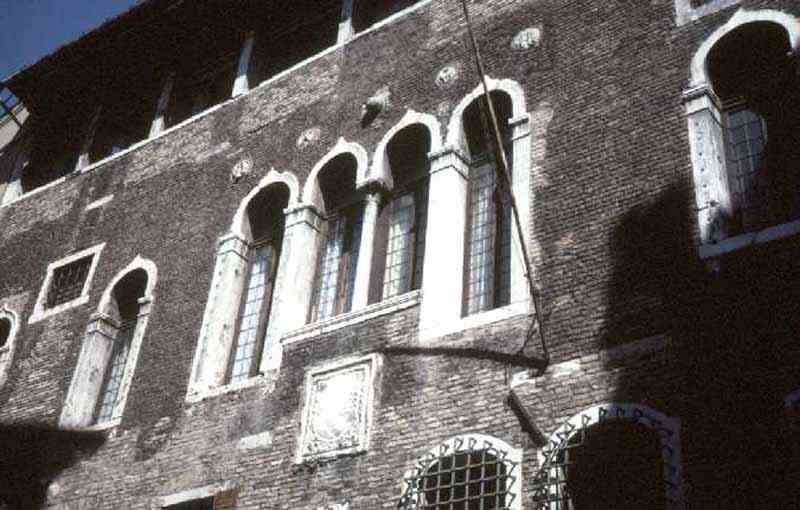
On our way from Venice to Rome we passed throught San Marino.
It is the world's smallest republic and possibly the oldest state in Europe.
It is basically only a mountain top.
Rome
The Piazza Venezia in Rome. It was built in 1911 and is a monument to Vittorio Emannele II, the first king of unified Italy.
There was a ceremonially guarded tomb to an unknown soldier in front of it.
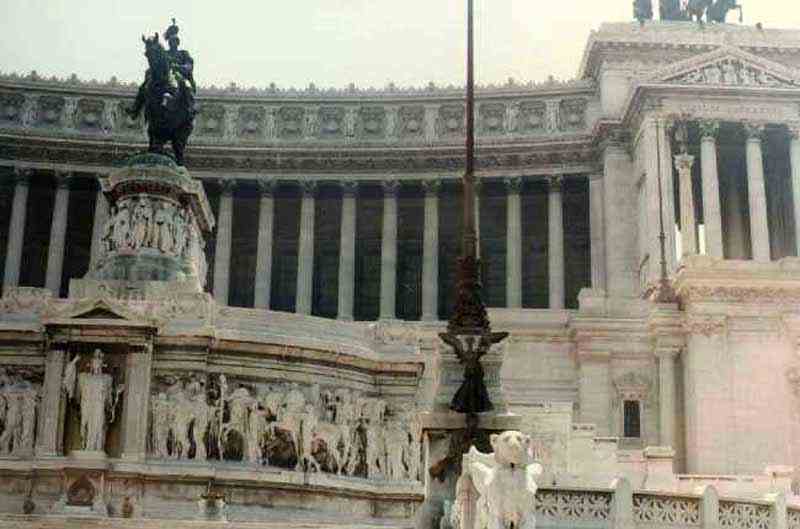
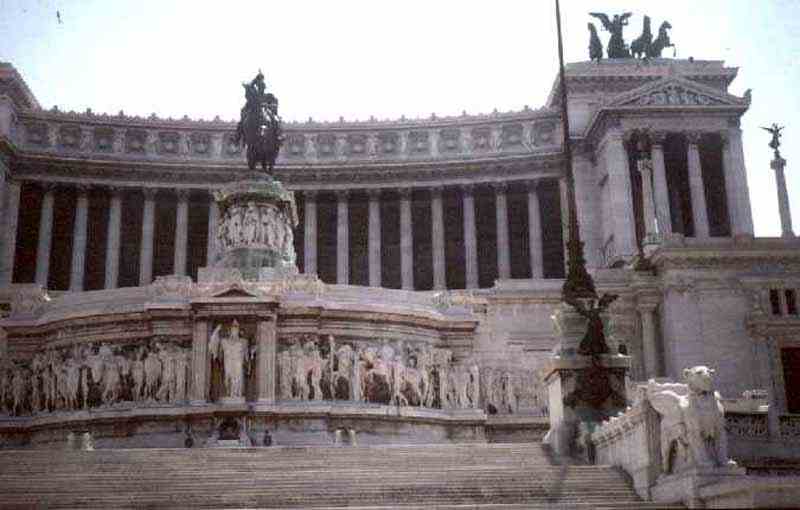
St. Peters Basilica, the largest and most famous Christian church in the world.
Building began in 1506. Several architects were involved. It owes more to Michaelangelo who designed the dome in 1546 when he was 72.
It was finished 60 years after his death.
It seats over 50,000 people and was built over the tomb of the Apostle, St. Peter. There are no paintings but lots of mosaics.
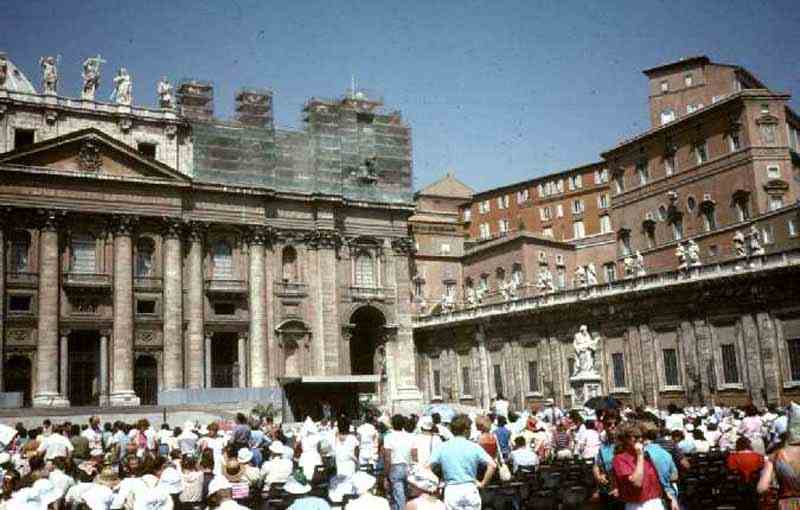
St. Peters Square
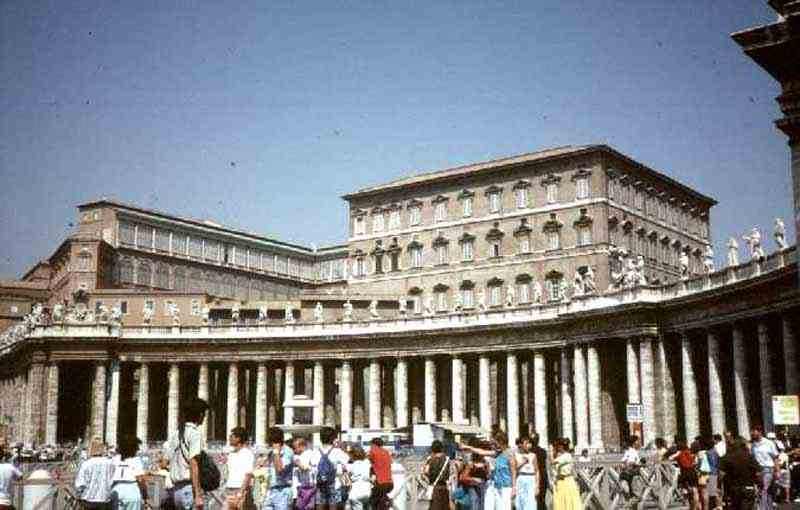
The Vatican City.
The Pope was given the sovereignty over this area in 1929.
In our tour we walked through rooms and rooms of gilded splendour - paintings, tapestries and Papal gifts.
We saw the famous Sistene Chapel with its famous Michalangelo paintings. The ceiling took him 4 years to paint. It was named after Pope Sistine.
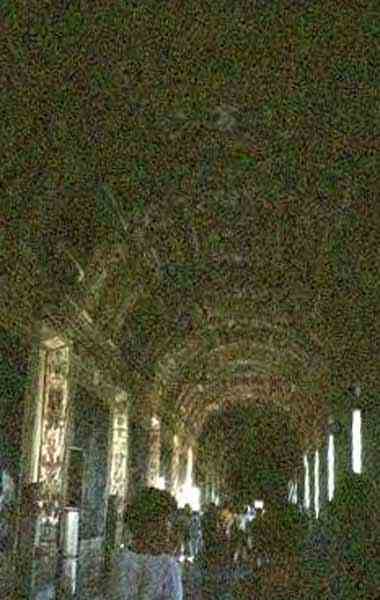
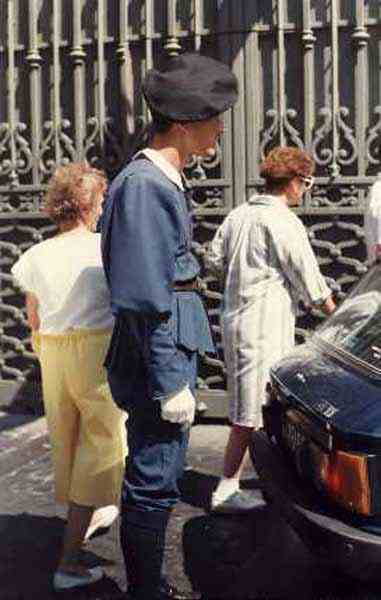
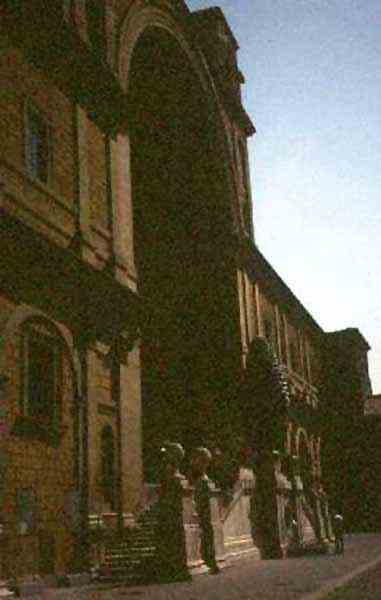
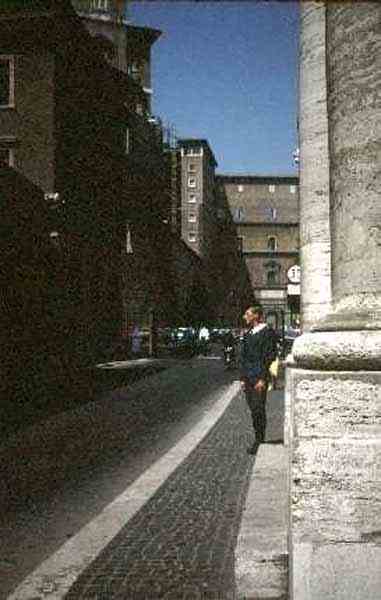
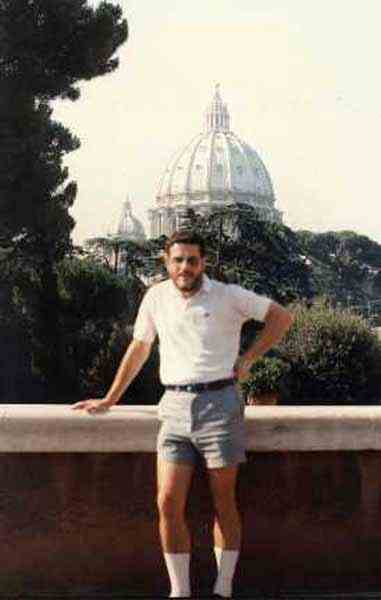
The Trevi Fountain.
Designed in 1732, it was supplied with water by one of Rome's earliest aqueducts.
The famous custom is to throw a coin into it (over your shoulder while facing away) to ensure your return to Rome.
It is also held that if you throw a second coin you can make a wish.
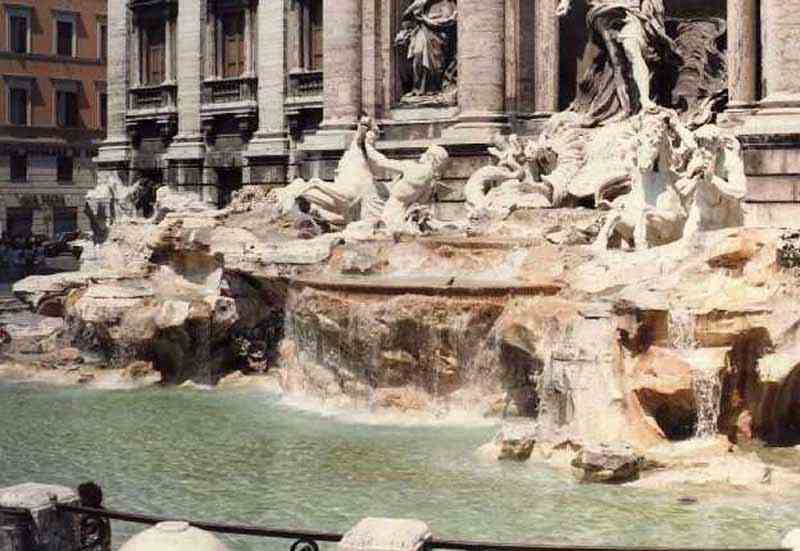
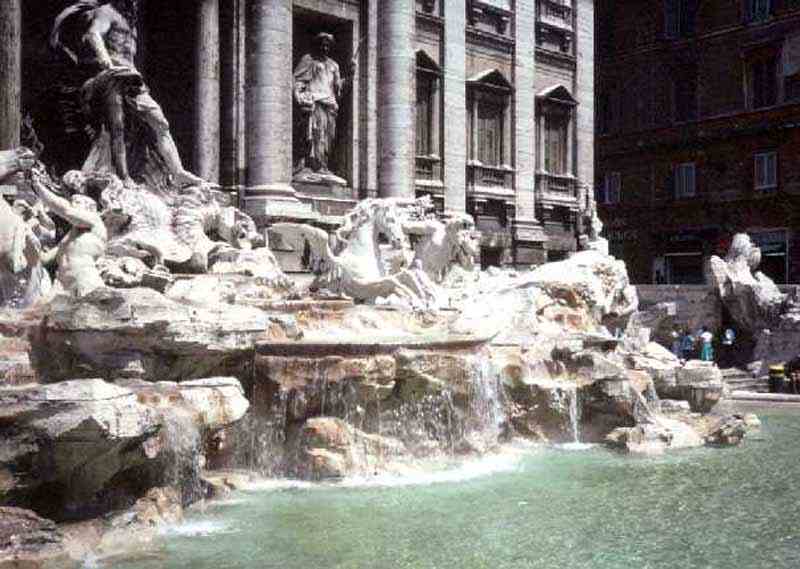
The Spanish Steps.
Piazza di Spagna or the Spanish Steps are so called because the Spanish Embassy is located here.
The steps lead from Bernini's fountain - ingeniously sunk below ground level - up to the Trinita'Dei Monti.
They were built between 1723 and 1726 by de Sanctis.
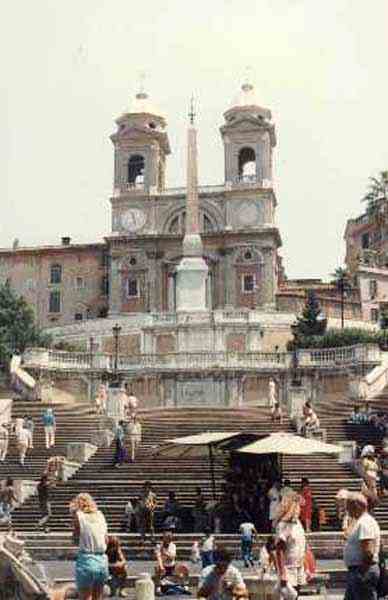
The Lateran Obelisk is the largest standing ancient Egyptian obelisk in the world, originally weighing around 455 tons.
From the temple of Amun in Karnak, it was brought to Rome in 357 to decorate the spina of the Circus Maximus.
It was in three pieces in 1587, and was restored approximately 4 m shorter by Pope Sixtus V,
and erected near the Lateran Palace and basilica of San Giovanni.
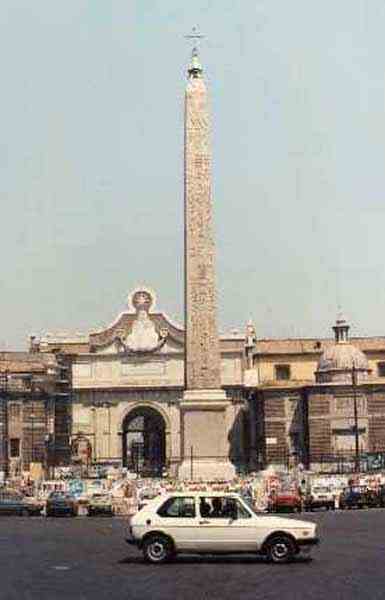
The Roman Forum
The commercial, political and religious centre of ancient Rome.
Originally marshland, the area was drained during the early Republican era and became a centre for political rallies,
public ceremonies and senate meetings.
Its importance declined along with the empire after the 4th century.
It fell into ruin and was used as pasture land. Excavation started in the 18th and 19th centuries and is continuing today.
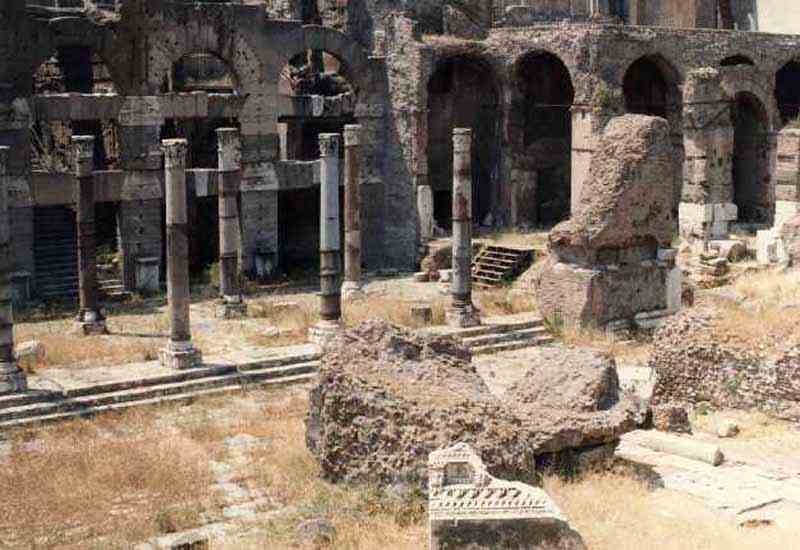
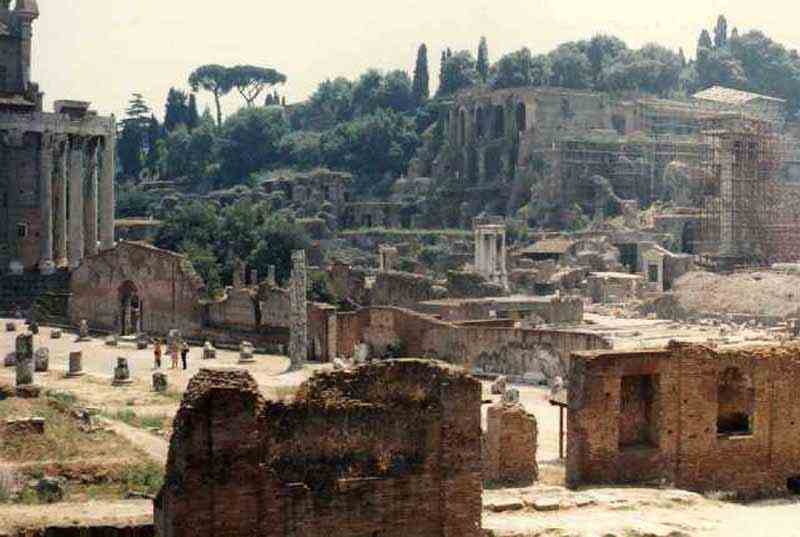
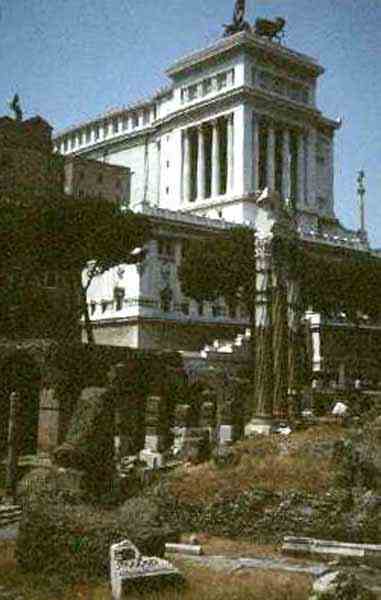
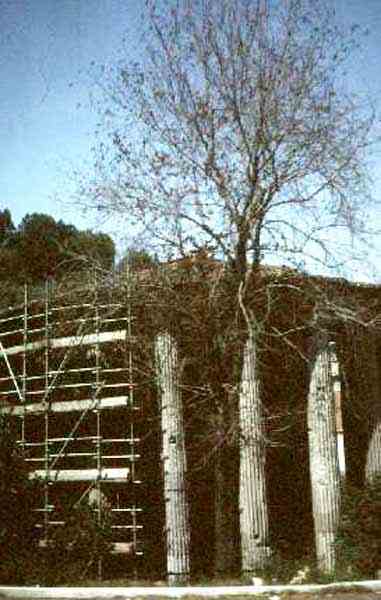
Tivoli
Set on a hill, Tivoli was a resort town of the ancient Romans and again became popular as a summer playground during the Renaissance.
The famous terraced gardens and fountains were in the grounds of the palaces built by Emperor Hadrian.
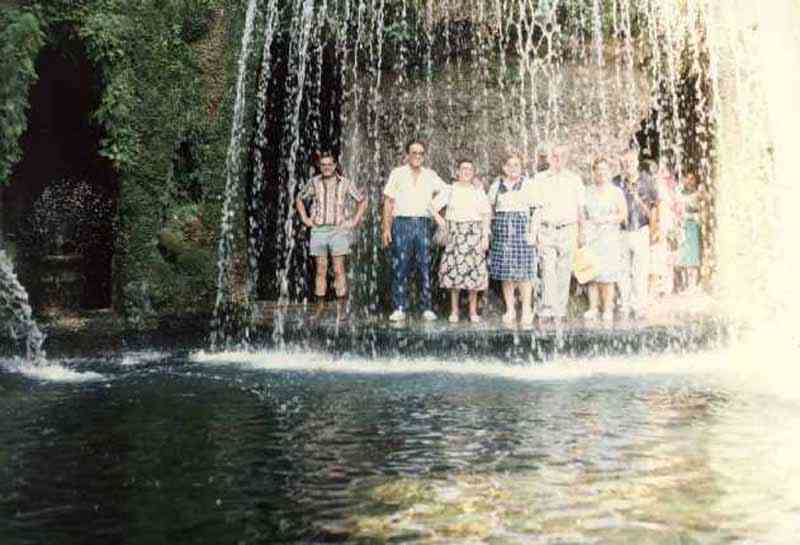
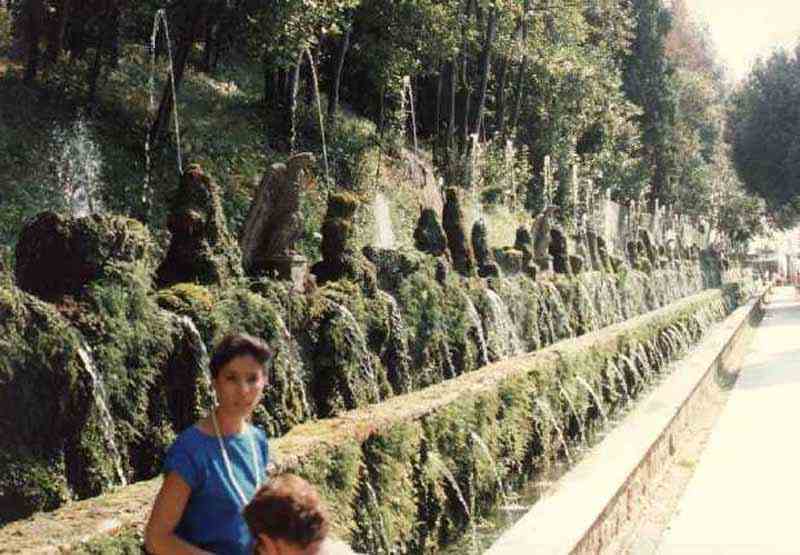
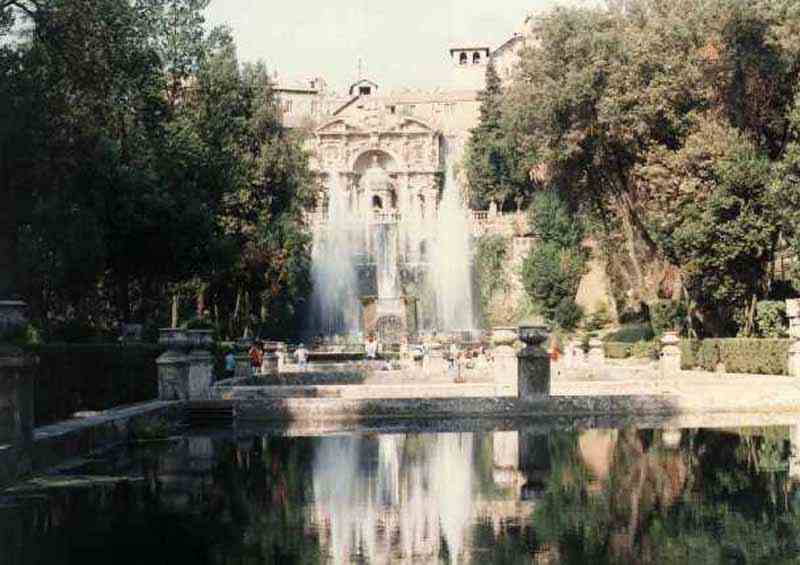
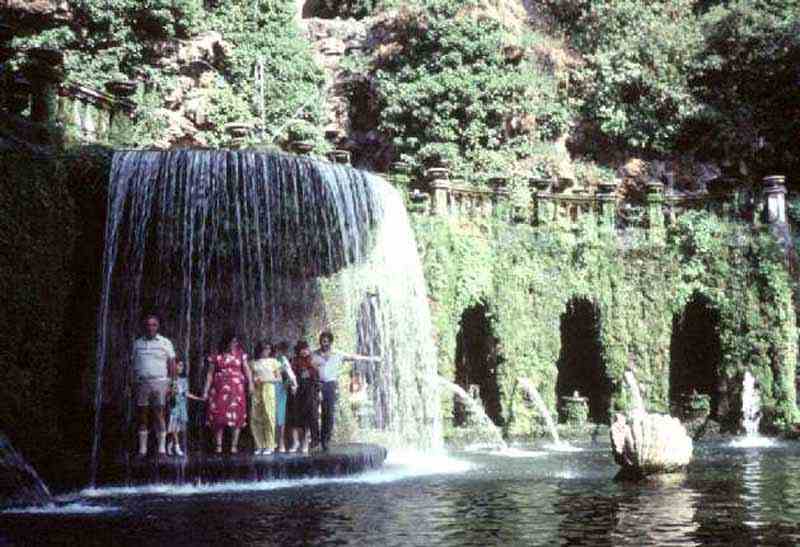
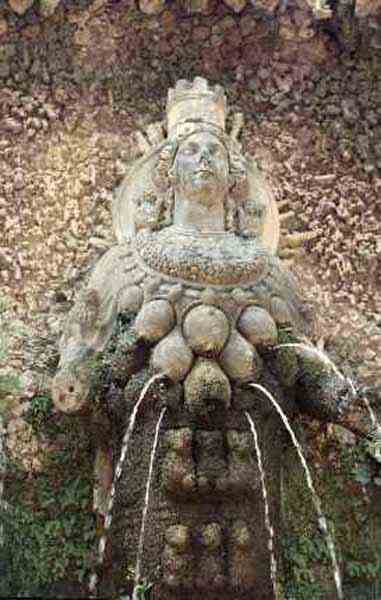
Leaving Rome for Florence we passed a number of hilltop fortified settlements.
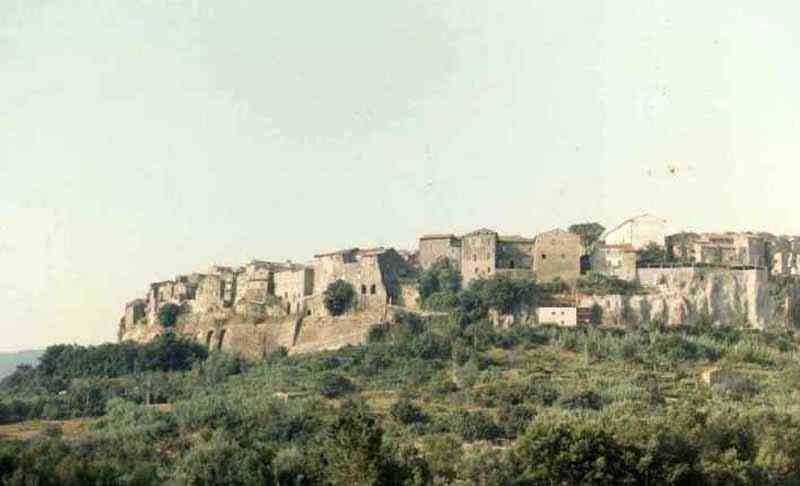
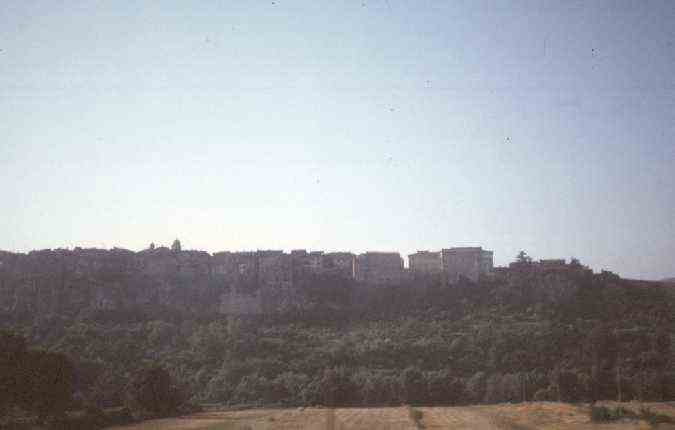
Florence (Firenze)
Overlooking Florence from Piazzle Michelangelo (Little Michelangelo Square).
Cradle of the Renaissance, home of Dante, Machiavelli, Michaelangelo and the Medici,
Florence is overwhelming in its wealth of art, culture and history.
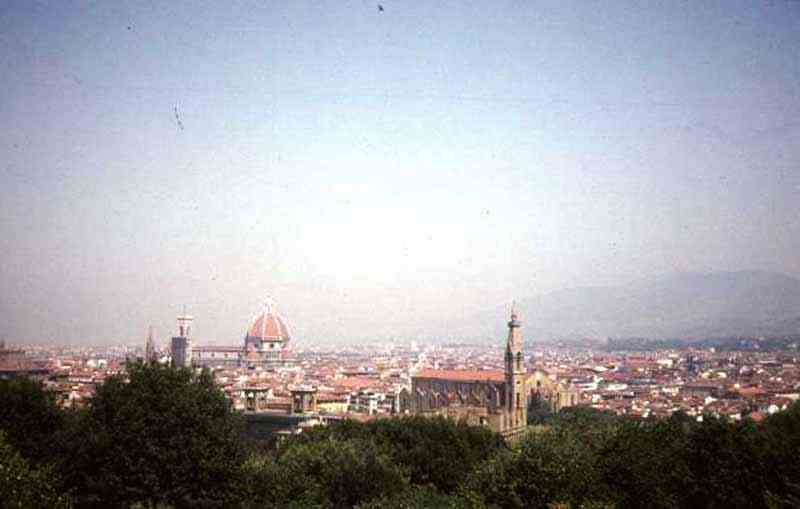
The Ponte Vecchio in Florence in the distance.
The famous 14th century bridge is lined with gold and silversmith shops.
Originally, the shops housed butchers. A corridor along the 1st floor was built by the Medici to link the Pitti Palace and the Uffizi Gallery.
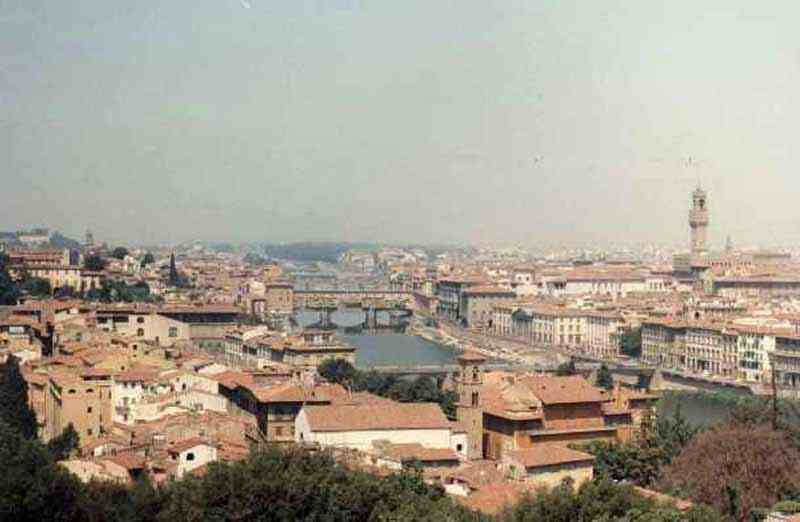
Built by Arnolfo di Cambio between 1299 and 1314, the Palazzo Vecchio was and remains the seat of Florentine government.
In the 16th century it became the palace of the Medici before they moved to the Pitti Palace.
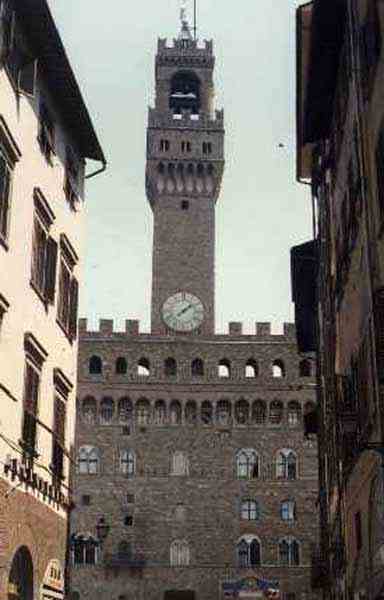
The Gates to Paradise, gilded bronze doors of the baptistry next to the Duomo cathedral.
Designed by Lorenzo Ghiberti the panels depict stories from the bible.
Michelangelo described them as the most beautiful creation that he had seen.
These are the originals.
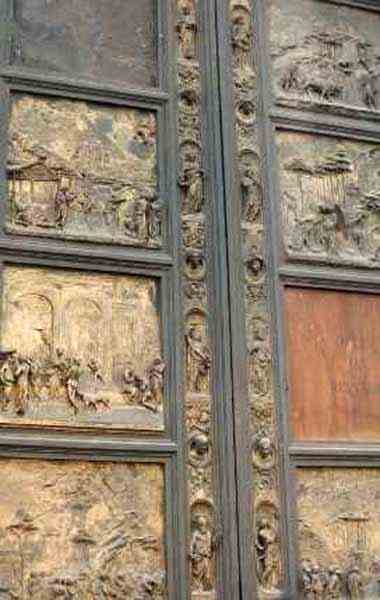
A copy of the statue of David by Michaelangelo in the Plazza della Signoria outside the Palazzo Vecchio.
The original statue is in the Accademia in Florence. Unfortunately it was closed when we were there.
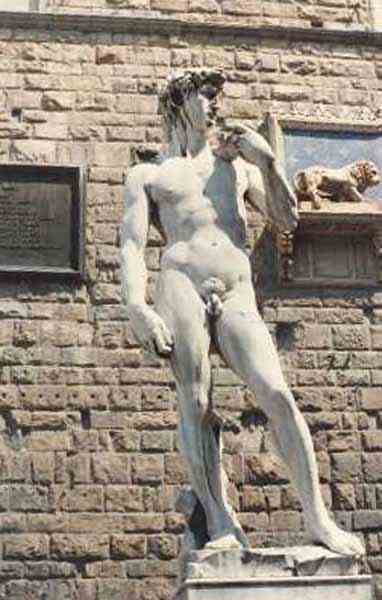
The Rape of the Sabine Women in the Piazza della Signoria.
It is a marble sculpture by Giovanni de Bologna and was completed in 1583.
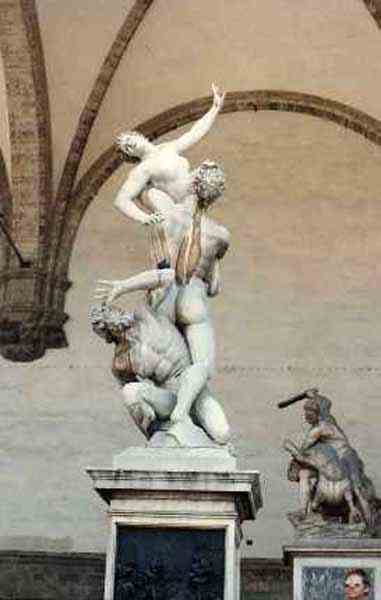
The Death of the Gorgon also known as Perseus and Medusa by Benvenuto Cellini in the Piazza della Signoria.
Medusa is a creature from Greek mythology. She was once a beautiful maiden whose prized asset was her luxurious head of hair.
As so often happens in the Grecian myths, her pride was her downfall. She dared to compare her beauty to that of the goddess Athena.
Athena punished Medusa by transforming her hair into a mass of writhing, hissing snakes. Medusa became so hideous that any beast or human who saw her instantly changed to stone,
and her dwelling was surrounded by her victims.
The great hero Perseus was commissioned by king Polydectes of Seriphus to destroy Medusa. Since no one could look directly at her without turning to stone.
Perseus cleverly slew her as she slept by looking at her reflection in the polish of his golden shield.
He decapitated her and proudly carried her head as a trophy to king Polydectes.
Medusa was known as a Gorgon. Gorgons were female personifications of the "white-crested" waves of the sea.
This association with the sea may account for the depiction of Medusa's gushing blood from her severed head as coral.
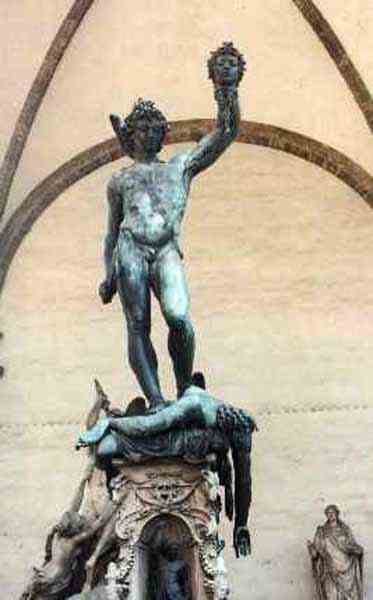
Pisa
The Leaning Tower of Pisa.
Building was started in 1174, reputedly by Bonanno Pisano, but the foundations were unsound
and the 57metre tower had already begun to lean by the time of its completion in the 14th century.
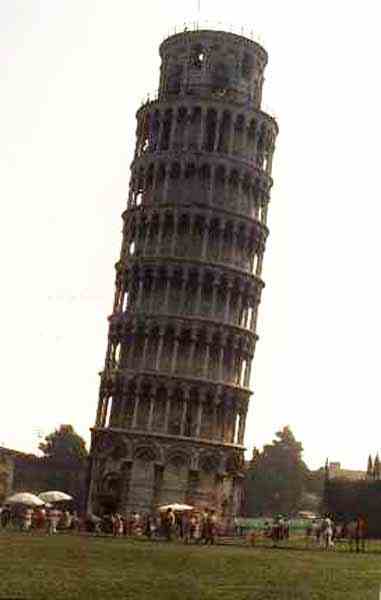
It is the bell tower (or campanile) of the Pisa basilica.
Its tilt at the top is more than 5 metres from the vertical.
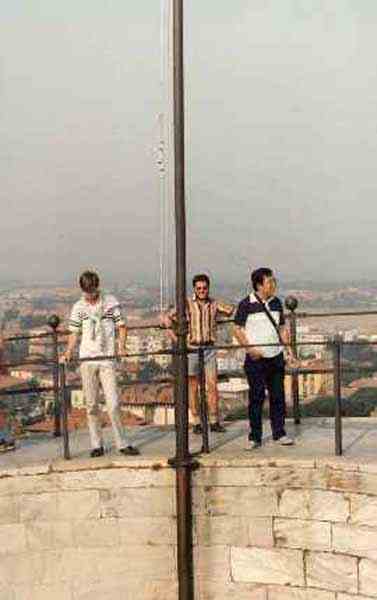


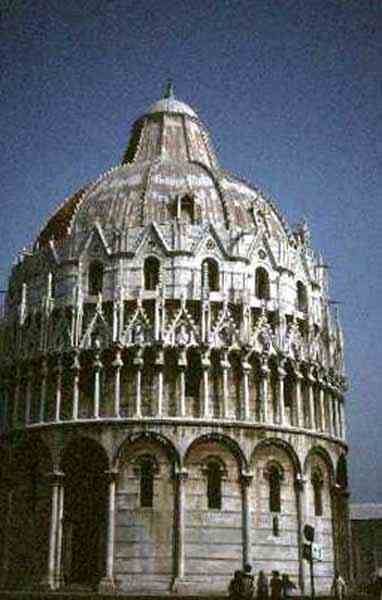
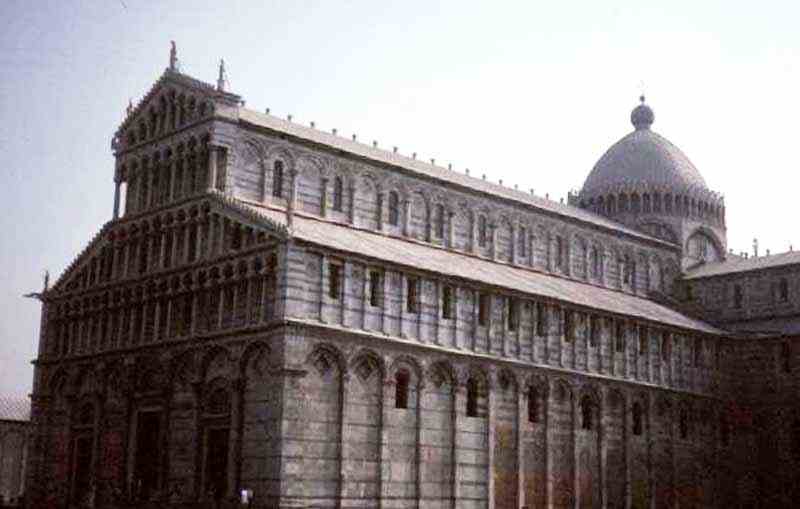
From Pisa we travelled to Monaco.
Taking long service leave for the middle school term in 1985 I went on my first trip to Europe.
(A 13-week Melbourne - Bangkok - Hong Kong -Taipei - Japan - Trans Siberian Railway - UK - Athens -
Israel - Egypt - Western Europe - Singapore - Melbourne trip.)
From Vienna we travelled through the Austrian Alps, staying overnight at Villach in Austria
and then through The Dolomites into Italy to Cortina and eventually to Venice.
The Dolomites





A Ski chalet at Cortina. The 1956 Winter Olympic Games were held in this Italian mountain village.



An Italian Autostrade.

Venice
The old city of Venice is an island divided by canals.
Napoleon once lived here. A space was left for his statue but it was
never built.
The Rialoto Bridge.
The bridge was the meeting place in Shakespeare's Merchant of Venice.
Marco Polo lived in this area.



Venetian gondolas are black as a sign of respect for the people who died in the black plague.
Gondola means sea horse. They have bronze sea horses on them.



The Bridge of Sighs connects the Doge's Palace to the dungeons.
It is called the Bridge of Sighs because the prisoners sighed as they had their last look at Venice
while they passed on their way from sentence to imprisonment or death.

St Marks Square.
Our humorous guide said that they were Catholic pigeons - no birth control.


A chastity belt at the museum at the Doges Palace.




On our way from Venice to Rome we passed throught San Marino.
It is the world's smallest republic and possibly the oldest state in Europe.
It is basically only a mountain top.
Rome
The Piazza Venezia in Rome. It was built in 1911 and is a monument to Vittorio Emannele II, the first king of unified Italy.
There was a ceremonially guarded tomb to an unknown soldier in front of it.

St. Peters Basilica, the largest and most famous Christian church in the world.
Building began in 1506. Several architects were involved. It owes more to Michaelangelo who designed the dome in 1546 when he was 72.
It was finished 60 years after his death.
It seats over 50,000 people and was built over the tomb of the Apostle, St. Peter. There are no paintings but lots of mosaics.

St. Peters Square

The Vatican City.
The Pope was given the sovereignty over this area in 1929.
In our tour we walked through rooms and rooms of gilded splendour - paintings, tapestries and Papal gifts.
We saw the famous Sistene Chapel with its famous Michalangelo paintings. The ceiling took him 4 years to paint. It was named after Pope Sistine.



The Trevi Fountain.
Designed in 1732, it was supplied with water by one of Rome's earliest aqueducts.
The famous custom is to throw a coin into it (over your shoulder while facing away) to ensure your return to Rome.
It is also held that if you throw a second coin you can make a wish.

The Spanish Steps.
Piazza di Spagna or the Spanish Steps are so called because the Spanish Embassy is located here.
The steps lead from Bernini's fountain - ingeniously sunk below ground level - up to the Trinita'Dei Monti.
They were built between 1723 and 1726 by de Sanctis.
The Lateran Obelisk is the largest standing ancient Egyptian obelisk in the world, originally weighing around 455 tons.
From the temple of Amun in Karnak, it was brought to Rome in 357 to decorate the spina of the Circus Maximus.
It was in three pieces in 1587, and was restored approximately 4 m shorter by Pope Sixtus V,
and erected near the Lateran Palace and basilica of San Giovanni.
The Roman Forum
The commercial, political and religious centre of ancient Rome.
Originally marshland, the area was drained during the early Republican era and became a centre for political rallies,
public ceremonies and senate meetings.
Its importance declined along with the empire after the 4th century.
It fell into ruin and was used as pasture land. Excavation started in the 18th and 19th centuries and is continuing today.




Tivoli
Set on a hill, Tivoli was a resort town of the ancient Romans and again became popular as a summer playground during the Renaissance.
The famous terraced gardens and fountains were in the grounds of the palaces built by Emperor Hadrian.


Leaving Rome for Florence we passed a number of hilltop fortified settlements.

Florence (Firenze)
Overlooking Florence from Piazzle Michelangelo (Little Michelangelo Square).
Cradle of the Renaissance, home of Dante, Machiavelli, Michaelangelo and the Medici,
Florence is overwhelming in its wealth of art, culture and history.

The Ponte Vecchio in Florence in the distance.
The famous 14th century bridge is lined with gold and silversmith shops.
Originally, the shops housed butchers. A corridor along the 1st floor was built by the Medici to link the Pitti Palace and the Uffizi Gallery.
Built by Arnolfo di Cambio between 1299 and 1314, the Palazzo Vecchio was and remains the seat of Florentine government.
In the 16th century it became the palace of the Medici before they moved to the Pitti Palace.

The Gates to Paradise, gilded bronze doors of the baptistry next to the Duomo cathedral.
Designed by Lorenzo Ghiberti the panels depict stories from the bible.
Michelangelo described them as the most beautiful creation that he had seen.
These are the originals.
A copy of the statue of David by Michaelangelo in the Plazza della Signoria outside the Palazzo Vecchio.
The original statue is in the Accademia in Florence. Unfortunately it was closed when we were there.
The Rape of the Sabine Women in the Piazza della Signoria.
It is a marble sculpture by Giovanni de Bologna and was completed in 1583.
The Death of the Gorgon also known as Perseus and Medusa by Benvenuto Cellini in the Piazza della Signoria.
Medusa is a creature from Greek mythology. She was once a beautiful maiden whose prized asset was her luxurious head of hair.
As so often happens in the Grecian myths, her pride was her downfall. She dared to compare her beauty to that of the goddess Athena.
Athena punished Medusa by transforming her hair into a mass of writhing, hissing snakes. Medusa became so hideous that any beast or human who saw her instantly changed to stone,
and her dwelling was surrounded by her victims.
The great hero Perseus was commissioned by king Polydectes of Seriphus to destroy Medusa. Since no one could look directly at her without turning to stone.
Perseus cleverly slew her as she slept by looking at her reflection in the polish of his golden shield.
He decapitated her and proudly carried her head as a trophy to king Polydectes.
Medusa was known as a Gorgon. Gorgons were female personifications of the "white-crested" waves of the sea.
This association with the sea may account for the depiction of Medusa's gushing blood from her severed head as coral.
Pisa
The Leaning Tower of Pisa.
Building was started in 1174, reputedly by Bonanno Pisano, but the foundations were unsound
and the 57metre tower had already begun to lean by the time of its completion in the 14th century.
It is the bell tower (or campanile) of the Pisa basilica.
Its tilt at the top is more than 5 metres from the vertical.




From Pisa we travelled to Monaco.